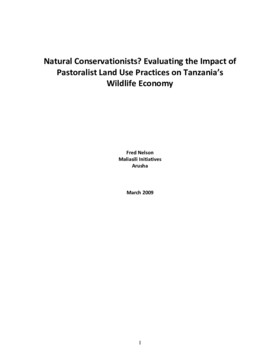Natural Conservationists? Evaluating the Impact of Pastoralist Land Use Practices on Tanzania’s Wildlife Economy

The land management practices of pastoralist Maasai communities have a major bearing on landscapes and wildlife habitats in northern Tanzania. Pastoralists manage lands according to locally devised rules designed to manage and conserve key resources such as pastures and water sources. Dry season grazing reserves are an important part of traditional land management systems in many pastoralist communities, providing a ‘grass bank’ for livestock to consume during the long dry season when forage invariably becomes scarce and domestic animals are stressed for water and nutrients. Maintenance of grazing reserves, and other pastoralist management practices, helps to conserve wildlife on pastoralist lands. The available evidence suggests that pastoralists and wildlife continue to co-exist in northern Tanzanian savannahs ecosystems, with pastoralists having few significant negative, and in some cases positive, impacts on wildlife densities and diversity. Wildlife relies extensively on pastoralist managed lands, both those immediately adjacent to state protected areas and across the broader landscape.
Cite this publication
Available at https://www.iied.org/g02729






